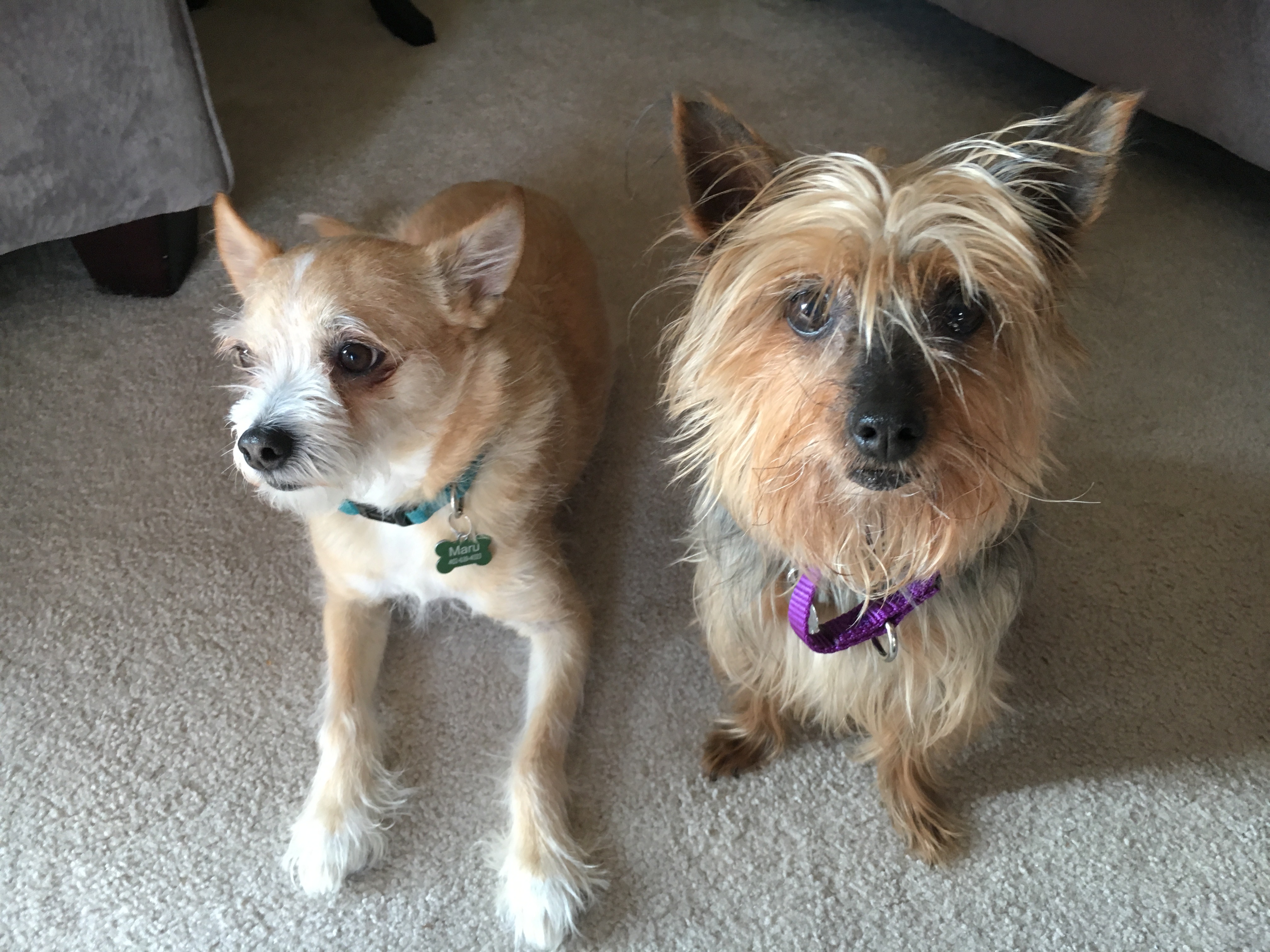Tips to Help a Pair of Little Dogs with Separation Anxiety
By: David Codr
Published Date: June 14, 2018
For this Omaha dog training session we worked with two little dogs (11 year-old Silky-Terrier Maya and 7 year-old Chinese Crested / Chihuahua Maru) who love to bark a lot and have some separation anxiety issues.
Because the family has a baby and the dogs bark like crazy when people arrive, I called ahead and arranged for the guardian to bring Maru outside so we could meet there and I could take him for a short walk to evaluate. When I got back I had the guardian bring out Maya and repeated the process.
This resulted in zero barking when I finally made my way inside the house. #success The guardians may want to adopt a similar approach and ask friends to come over to see the baby and help the dogs practice this sort of greeting instead of barking like crazy.
I could see the dogs were anxious and twitchy. I asked the guardians a number of questions about the dog’s day to day routine and the dog behavior problems they wanted help with.
I found out the dogs were under exercised, lacked structure and saw the humans as peers or as having lower rank than the dogs. This lack of structure is a huge contributing factor to Maru’s marking inside the house.
As a dog behavior expert, I have done plenty of research on dog marking and I have found the three keys to stopping a dog from marking are:
- Pet with a purpose only. No free pets. Dog must earn attention and affection through positive and desired actions like sitting, coming, laying down, etc.
- Eliminate the dog’s ability to sit at the same or higher level than humans (dogs sit in positions of height based on their status amongst their peers.
- Remove or thoroughly clean (with an enzyme based product) all tainted items the dog has urinated on as the smell attracts more marking.
After going over rules, structure, how to reward desired behaviors (passive training) and some creative ways to exercise, I was ready to address the dog’s separation anxiety problem.
Helping a dog get over a case of separation anxiety is all about building up the dog’s confidence and helping it practice being alone. Separation Anxiety often kicks in because we love on our dogs so much without any structure which causes them to become needy and completely out of practice at being alone. But adding a little structure is a great way to stop a dog from suffering from separation anxiety.
I showed the guardians how to train a dog to stay which will build up their confidence and give the humans the opportunity to help the dog practice staying while they leave the room for progressively longer periods of time.
To help the family remember all the dog behavior tips I shared in this in home dog training session, we shot a roadmap to success video.
Categorized in: Dog Behavior


